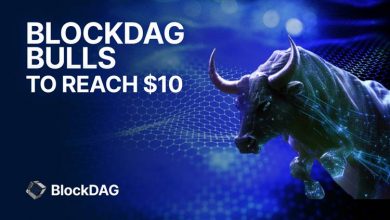Are Digital Advertising Stocks A Safe Haven? Analyzing Alphabet, Bright Mountain Media and Key Players

- Resilient Growth: Despite the broader tech sector’s fluctuations, digital advertising shows strong resilience and growth, driven by giants like Google and innovative companies like Bright Mountain Media. Google’s significant revenue increase and Bright Mountain Media’s diverse service offerings exemplify the sector’s robust performance.
- Strategic Advantages: Digital advertising benefits from being an essential service with high adaptability and data-driven precision, making it less vulnerable to economic downturns compared to other industries. Companies like Bright Mountain Media enhance ROI for advertisers through targeted solutions and insights-driven strategies.
- Comparison with Other Sectors: While industries like automotive manufacturing and real estate have faced challenges, digital advertising thrives on continuous innovation and the digitization of consumer habits, underscoring its potential as a lucrative investment opportunity in contrast to traditional sectors.
In an economic landscape punctuated by fluctuations across the tech sector, digital advertising has proven to be resilient. In some cases, thriving, suggesting a fertile ground for investors seeking outsized returns. Amidst a broader tech downturn, it is crucial to differentiate between the general tech industry and the specialized niche of digital advertising and media. This sector, bolstered by innovative companies like Bright Mountain Media, Inc. (OTCQB: BMTM) and the impressive results of Alphabet’s Google, presents a compelling argument for its distinct potential.
The Resilience of Digital Advertising
The digital advertising sector continues to demonstrate robust growth, spearheaded by industry giants and supported by burgeoning firms. This week, Luigi Wewege, the president of Caye International Bank shared his research on high growth stocks where the digital marketing industry overall received a high rating. Alphabet Inc., Google’s parent company, recently posted a significant revenue jump of 15% to $80.5 billion, outpacing expectations. This surge was driven in part by its advertising revenues from platforms like YouTube and Google Search, underscoring the enduring demand for digital advertising space despite broader economic headwinds. The sector’s resilience is further illustrated by trends in emerging formats such as podcast advertising. According to the IAB U.S. Podcast Advertising Revenue Study prepared by PricewaterhouseCoopers LLP, while the broader challenging ad market in 2023 slowed podcast growth, this niche is projected to expand by 12% to over $2 billion this year, with expectations to reach nearly $2.6 billion by 2026. Innovations in programmatic advertising, along with new revenue streams from video and live events, are poised to drive this growth.
However, the spotlight also deserves to shine on smaller entities that are carving out substantial niches within this domain. Bright Mountain Media, a noteworthy example, has reported a stunning 128% increase in annual revenue, showcasing a sharp ascendancy in its market presence. With a diversified portfolio that spans across advertising, marketing, technology, and media services fused by data-driven insights, BMTM stands out as a microcosm of growth potential within the sector. The success of such firms highlights the channel’s wide appeal and the diverse opportunities that continue to emerge in the digital advertising landscape.
Why Digital Advertising Stands Apart
Digital advertising benefits from several unique attributes that insulate it against the volatility seen in the broader tech landscape:
- Essential Service Provision: Unlike discretionary tech gadgets or speculative software products, advertising is an essential service for businesses aiming to reach consumers effectively. This makes digital advertising a staple expenditure for companies regardless of economic conditions.
- Data-Driven Precision: Companies like Bright Mountain Media leverage sophisticated analytics and consumer insights to optimize advertising effectiveness. For instance, BMTM’s Big Village Insights and Wild Sky Media MomLife brands use cutting-edge technology and in-depth analysis to offer targeted advertising solutions, thereby enhancing ROI for advertisers.
- Scalability and Adaptability: Digital advertising platforms can quickly adjust to changing market dynamics and consumer behaviors, unlike traditional media which may have longer lead times and less flexibility.
- Diverse Revenue Streams: By integrating multiple services and offerings, companies within this space, such as Bright Mountain Media, can tap into various revenue streams from strategy, creative services, media planning, and data analysis.
Case Study: Bright Mountain Media’s Strategic Positioning
Bright Mountain Media exemplifies strategic positioning in digital advertising, harnessing a composite approach to service delivery. With a suite of interconnected brands, each specializing in different facets of the advertising process, BMTM delivers an end-to-end solution that is particularly attractive in an environment where efficiency and effectiveness are paramount. The impressive financial performance, with a gross margin increase of 41% in 2023, is testament to their effective business model and market demand for their specialized services.
While companies like The Trade Desk and PubMatic have shown robust growth and strong profitability in the adtech space, their performance has yet to match the exceptional rises seen by giants like Google and specialized firms like Bright Mountain Media. Here’s a deeper analysis incorporating the distinct features and challenges these companies face, which might explain why their stocks could perform differently:
- Scope and Scale: Google, with its dominant market position in online search, has a massive advantage in digital advertising due to its extensive data and widespread user engagement. This broad reach allows Google to command a significant portion of advertising budgets worldwide. Similarly, Bright Mountain Media, although smaller, benefits from its comprehensive approach—integrating advertising, marketing, technology, and media services under one roof, which is particularly appealing in today’s fragmented media landscape.
- Diversification and Resilience: Google’s diversification across multiple platforms like YouTube, Google Search, and Android provides resilience and extensive market penetration that specialized adtech firms can’t easily match. The Trade Desk, focusing on the buy-side of the digital advertising market, and PubMatic, servicing the sell-side, cater to more specialized segments, which can limit their growth potential compared to Google’s more comprehensive ecosystem.
- Technological and Innovative Edge: Google continually invests in advancing its technology, particularly in AI and machine learning, to maintain superior ad targeting and effectiveness. Bright Mountain Media also leverages data-driven insights across a wide array of services, creating unique value. In contrast, while The Trade Desk and PubMatic are certainly innovative within their respective niches—such as The Trade Desk’s AI-powered, cloud-based platform for ad buying automation—they may not fully encompass the broader dynamics and scale of Google’s capabilities.
- Operational Efficiencies and Risks: The operational models of The Trade Desk and PubMatic, though efficient, face different market dynamics. PubMatic’s unique approach to managing its hardware infrastructure to reduce costs also carries significant capital expenditure and operational risks. These are challenges that larger, more diversified firms like Google can more readily absorb.
- Revenue Growth and Market Dynamics: The Trade Desk and PubMatic have shown impressive revenue growth, with The Trade Desk rapidly increasing its revenue and maintaining high customer retention rates, and PubMatic leveraging its infrastructure to cut costs significantly. However, their growth trajectories still face stiff competition from Google’s pervasive presence and Bright Mountain Media’s integrated service model. Moreover, as highlighted in recent reports like the IAB U.S. Podcast Advertising Revenue Study, sectors like podcasting show significant growth potential but also highlight the fragmented nature of digital advertising growth, which benefits firms with broader operational scopes.
These factors collectively illustrate why, despite their successes, some ad tech stocks may not reach the same market performance levels as industry leaders like Google or highly integrated firms like Bright Mountain Media. Their more niche focus, while advantageous in specific segments, might not capture broader market opportunities as effectively. This nuanced understanding of their business models, market reach, and strategic positioning is crucial for evaluating their potential in a competitive landscape.
Digital Advertising Compared To Other Traditional Investor Favourites
While digital advertising continues to flourish, several traditionally reliable industries have not fared as well, further accentuating the opportunity within digital advertising. Industries such as automotive manufacturing and retail have experienced stagnant growth due to supply chain disruptions and shifting consumer preferences accelerated by the pandemic. Similarly, the real estate sector has faced challenges with fluctuating interest rates affecting buyer affordability. In contrast, digital advertising thrives on continuous innovation and the increasing digitization of consumer habits. This sector’s ability to adapt and grow, even in uncertain times, starkly contrasts with these other industries’ struggles, highlighting its potential as a particularly promising area for investment.
Conclusion: A Sector Worth Watching
For investors, distinguishing between the broader tech malaise and the vibrant field of digital advertising is essential. The sector’s growth is fueled by innovation, essential service delivery, and an increasing shift of consumer and business activities online. As demonstrated by companies like Google and Bright Mountain Media, digital advertising not only offers resilience in turbulent times but also presents opportunities for significant growth.
Thus, while tech stocks may face headwinds, digital advertising stands as a beacon of growth, meriting investor attention for those seeking robust and potentially lucrative market opportunities. Yet among the industry players, are also those platforms that participate in the pay per click arena, which may soon have to be weighed by the European Union and FTC for compliance and transparency.
Disclaimer: The information provided in this article is for general informational purposes only and is not intended as financial advice. Investments in the stock market are subject to market risks, including the loss of principal. Investors should conduct their own research or consult with a professional financial advisor before making any investment decisions. The views expressed in this article do not necessarily reflect the official policy or position of any agency or company.





